An in-depth, hands-on review of the TC Electronic Nova System Multi-Effects unit.
The need for change….
I thought I had it all worked out, a Cornford Roadhouse 30 combo for my drive sounds, a Zoom G3 in the loop for adding effects and volume boost for solos. an BOSS SD-1 to push the Cornfords front end, a Dunlop CryBaby Wah and even a BOSS EQ to conjure up a pseudo clean channel by reducing the input gain. It worked, and it sounded great. But………
I had to deal with a mass of cables when setting up, it was noisy due to the daisy chain power supply and my refusal to shell out big bucks for an isolated one, and the switching was a always a pain, especially if I wanted to add volume boost (with the Zoom G3) and the BOSS SD-1 at the same time for a lead part.
A bandmate at the time was using a TC Electronic Nova system straight into a clean Egnator Tweaker 15w combo. He was setting up in no time, and had a range of great sounds at his feet, so I had to give it try.
First Impressions
There are two standout features of the TC Electronic Nova System that impress immediately. First is the boost feature. One of the main reasons I’d been using a booster/eq in the FX loop setup was that it was the only way of getting a decent volume boost for solos. Boosting the front end of an amp doesn’t have the same effect, you get more gain as opposed to volume. The Nova System has a clever solution to this in that the signal is always attenuated until you release it with the boost switch, thereby giving you a volume boost despite going into the front of the amp.
The second standout feature is the general build quality of the unit, it’s professional-looking with solid, brightly lit switches, its constructed from solid metal and has it’s own power supply, which puts paid to the constant worry of wall-warts and noise.
So, with my newly acquired Fender Blues Junior III set to clean, and the TC Electronic Nova System going into the front end I was set up in no time.
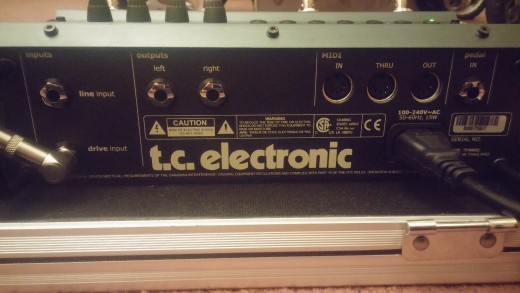
Configuring the TC Electronic Nova System
…..Well, I thought I was setup, but the Nova system seems unnecessarily complex for what it is.
First of all, you need to manually setup the input level to achieve the best signal, then set the output level to avoid any hiss if it’s present. This is fine for me as I don’t switch instruments, but I would imagine this would be a real pain for multi-instrument players, particularly those switching between humbuckers and single coils.
There’s the option of Line (FX Loop) or Drive (Amp in) input. Again, not a problem for me as the Fender Blues Junior III doesn’t have an FX loop, but when using the line input the drive section is disabled and you can’t run the Nova System using the 4CM (4 Cable Method with the drive going through the front-end, and effects through the loop), which’ll be a deal-breaker for many.
EQ and boost Level can be set globally or per patch, which is a useful feature for the boost to save setting it up for every patch but maybe less so for EQ where I prefer EQ per patch.
Switching Modes: Pedal or Patch Mode ?
Why do I feel a little disappointed with the Nova System’s swiching system? Well you have two options, and neither of those work quite as effectively as you’d hoped.
Pedal Mode.
In this mode, all of the switches turn on/off as labelled, so you can kick in the drive when you want for example. This is great as you have all the effect blocks (compression, reverb, drive, delay, mod, pitch and boost) all easily accessible, and the changes are instant with no noticeable delay. However, using this mode, you are limited to one effect per block, so you can’t switch to another drive setting on the fly, To do that you need to select another preset by first holding down a preset switch (1,2 or 3), wait for about a second, then release.
So, in practice, you may have a crunch tone set up on the drive block. Yes, you can knock the drive off easily for clean and boost the volume with the boost switch, but the boost is just too clean for a sustaining lead sound, so you need to setup a lead preset, and select it by holding (wait for a second) and release, then do the same to get back to the rhythm crunch tone. This is frankly unworkable, particularly in a live setting, but totally understandable as the front row switches are dual function. So then I turned to preset mode…..
Preset Mode.
Here, the reverb, compression and drive switches access the presets directly without need to hold them down first, while all the others are still able to instantly turn the effect block on/off. Great! Now I can have a adjacent patches for rhythm and lead and just switch between them, solving the above problem. Well, in practice there’s still an annoying delay when switching presets. Not a lot, but enough to bother you and throw off your timing. My Zoom G3 never had this problem and that was less than half the price. The other downside of Preset mode is that you can’t toggle the reverb, compression and drive anymore, which necessitates the creation of an extra clean or bypass preset.
In the end, I settled for preset mode, with a basic bank of patches being rhythm, lead and clean. It’s not ideal as there’s still a delay when switching presets, and not near as flexible as I was hoping,
Of course you could shell out for a 3 button switch which would allow the instant changing of presets whilst still in pedal mode, or I may even employ the boost of my Fender Blues Junior III as an alternative gain/volume boost, but the bottom line is the TC Nova System’s preset switching should be instant, and it isn’t.
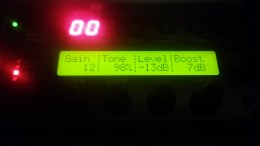
Analogue Drive Section
So then, is the much lauded Analogue Overdrive/Distortion of the Nova System all it’s cracked up to be?
Yes and No.
For starters, it’s not as versatile as the dedicated TC Electronic Nova Drive pedal. It lacks the mix control and the ability to combine the overdrive/distortion. I would have LOVED those features on the Nova System.
Also, as in the whole of the Nova System, the interface isn’t intuitive at all. You need to take the level way below 0 if any gain is applied to balance volume with the bypassed signal, It takes a while to dial in a decent overdrive sound, with anything below high 90’s on the tone parameter lacking clarity (I find I need to this set to 97% or 98%). The Nova System overdrive leans towards a chunkier, fuller sound which is great for some applications, but I like more clarity, particularity when rolling back the guitar volume (maybe the mix control would work wonders here). The Nova overdrive has regularly been labelled as ‘Tubescreamer-esque’.
As an example I used to be able to dial in a lot more gain on my Cornford for a lead tone, then back off the guitar volume to clean it up for rhythm. With the Nova System overdrive, the range is just not there and it muddies up more when backing off the volume. If you want a fuller lead sound the rhythm sound is too indistinct, and if you want a cleaner rhythm sound the lead is too bright. Shame.
But let’s put things into perspective. The drive section can never be ‘amp’ drive, and I can now set up a wider variety of overdrive sounds and conveniently switch between them, something I could never do with the Cornford, and it compares very favorably with other stand alone units.
Having a distortion option gives the TC Electronic Nova System even more flexibility, this is a far more abrasive ‘Rat’ style gain great for riffs and singing lead passages. It’s ruder, less smooth then the overdrive, and maybe more versatile. Confusingly I find a tone setting of around the 50% mark works best here.
At the end of the day, there’s a LOT of gain textures available here with integrated switching and the ability to easily boost the volume any time you want, even if they aren’t intuitive to dial in.
Effects quality
To be honest, I’m not a heavy effects user. Some songs need a phaser and a delay, but the main reason I bought the Nova System was to provide the dirt and boost to a clean amp.
Boost: The boost is a no-brainer. As previously mentioned, I can think of any other multi-fx unit that in effect attenuates the normal signal until the boost is hit, thereby giving you a decent volume hike into the front end of the amp. All the others just increase gain. It may be just a clean volume boost, but you can always assign the boost to a preset with added drive too.
Delay: The delay block is professional sounding and feature packed, with crystal clear repeats. There’s whole host of delay types including Clean, Analog, Tape, Ping Pong (for multi amp setups), Dynamic (ducking delay) and Dual (for edge style rhythmic repeats). For my needs I just use the clean delay, but it’s nice to have the flexibility on-hand if ever I wanted to branch out. TC Electronic is famous for it’s delays, and the Nova system doesn’t disappoint.
Pitch: The pitch block has a couple of surprises up it’s sleeve and has now become a sort of ‘utility’ block. First of all, Detune, which is a chorus style effect, allows you to free up the Mod block for something else (i.e. flanger). The pitch shifter also allows you to set up a second delay if required. Very handy. On top of this, the Octaver and intelligent pitch shifter track marvelously and sound huge.
Modulation: All the staples are present and correct. Chorus, flanger, phaser, vibrato and tremelo, with the panner as an added extra I coudn’t use in a single amp setup. Again we have superb tone and ultimate flexibility here, with a wealth of options, but herein lies the problem. The TC Electronic Nova System is NOT plug and play. The sounds are all in there, somewhere, but it takes time and patience to get the best out of it. I’ll explain more in the ‘Ease of Use’ section.
Reverb: Again, a wealth of options and spacious, natural sounds.
Compression: Really useful sustain / percussive settings, for lead passages or to get that ‘clicky’ clean rhythm tone. Also has an advanced option for the experts.
There’s no amp modelling or looping on the TC Electronic Nova System. Those wanting to go direct through the pa will need to make do with the speaker emulation.
In summary then, the TC Electronic Nova System keeps the effects roster simpler than most, but allows you to delve deeper than most into setting up those sounds. Overall the unit sounds dynamic, clear, natural and above all, professional.
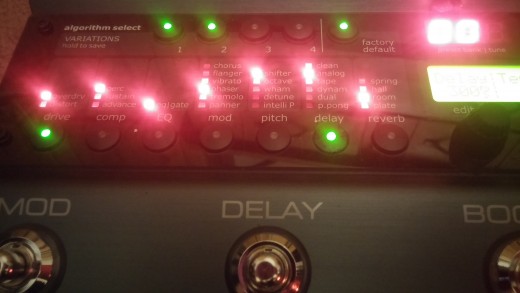
Pros
- Sound Quality.
- Reliability.
- Analogue Drive.
- A Boost facility that works.
- It’s own power supply.
Cons
- Not intuitive to use.
- Sluggish switching system.
- Lack of 4CM.
- No Wah.
- No Amp Models.
- No looper.
- Price.
Ease of Use
This is the Achilles heal of the TC Electronic Nova system. The sounds are all in there, somewhere, but it takes time and patience to get the best out of it. Some effects and settings have 3+ screens of parameters to setup, and labelled with guitar unfriendly terms such as % etc. A ‘Factory Default’ setting can be accessed for any effect, but in practice these tend to be so subtle you wouldn’t use them anyway.
Bottom line is, in a live or jamming environment, any adjustment is a nightmare. The effects labels on the unit are impossible to read under lighting so forget about changing an effect mid practice/gig. Settings-wise, you don’t really know where you are with the TC Electronic Nova System. You know which preset you are on and what blocks are active but that’s it. Contrast that with Zoom G3/G5 for example, which displays where you are at with each effect, and allows you to easily tweak on the fly with dedicated controls. With the Nova System, you need to set up your sounds beforehand, which isn’t ideal, as most of the time you’ll only discover changes need to be made when you’re in live situation. To add insult to injury, the tuner isn’t the best either, it won’t track a drop D reliably. So with the Nova system you’ll need to tune using the harmonic at the 12th.
It’s not all bad, however, The switches are great quality with super-bright LEDs and once you’ve set it up perfectly you’ll have solid, reliable and pro-sounding multi-fx unit at your feet.
The Competition
BOSS GT-100 (£289.00) – BOSS’s flagship model is more expensive than the Nova (£252.00), with the addition of COSM amp modelling and an assignable foot controller. The only unit here that offers the 4CM. This is the full monty for the heavy effects user.
BOSS ME-80 (£219) – Cheaper than the Nova by some way, with a foot-controller and a more pedal based plug and play interface with individual controls. Same COSM modelling technology as the GT-100.
Line6 M9 (£249) – Pitched at around the same price as the Nova, and although like all the other competitors, it doesn’t feature analogue drive, it does feature a very intuitive editing and switching system.
Zoom G3/G3X/G5 (£103 / £136 / £180) – An even more intuitive and visual interface, and the best bang for the buck. The G3X and G5 include the expression pedal. There’s a lot to love about these great value, great sounding, flexible and easy to use units.
Conclusions
Overall, the TC Electronic Nova System seems to be designed by scientists, not guitarists. It’s not intuitive and will seem cold and sterile to many, lacking the personality of rival units and individual pedals. The switching system also leaves a lot to be desired and considering the features and effects it has to offer (or rather those it doesn’t), it’s expensive.
However, once setup, it has superior tone to just about anything else on the market. Not just the delay and modulation, but also the analogue drive section and effective volume boost.
It may not be as intuitive, feature-packed, or as much fun as it’s competitors, but It’s a serious, professional tool for the technically minded player.
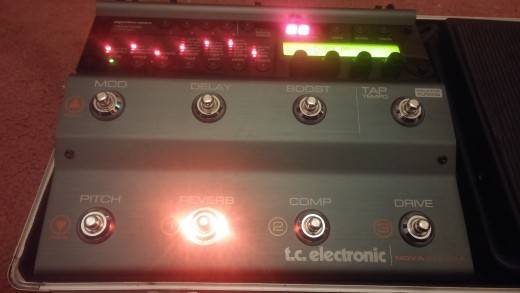
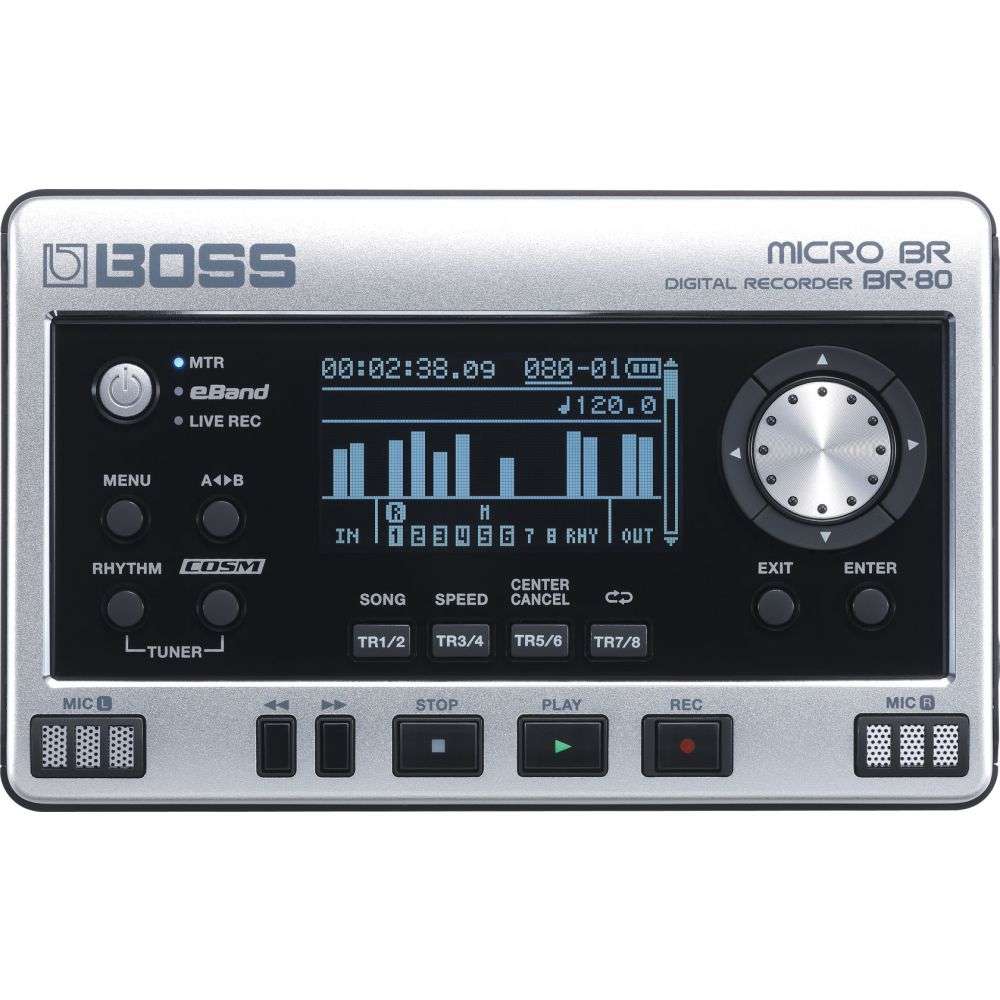


six years later 🙂 PRESET MODE delay problem solution- before you switch the preset, just step on secons erlier on knob, hold it, and release it at the moment, when you need it! That’s how it works
Well…. wish I’d known that 10 years ago and things might have been different!
exclnt write-up, thanks
Yup. Awful switching system.thanks for reading!
Glad I read your review I thought it was me with the switching system
Thanks StratoFisher, really appreciate the reblog and glad you liked the review.
Reblogged this on strat0fisher and commented:
Great review of the TC Electronics Nova System.